Recognize the limits: Where is the tolerance limit?
Now that we know why current graphics cards produce such extreme load peaks, let's look at the possible consequences. Who doesn't remember all the discussions parallel to the launch of the R9 295X2, which cable to which rail of the power supply would be connected, how durable plugs and cables are, and the question of where the real limits lie? Plug, cable, power supply – who is actually to blame when it gets dark with a bang or hiss?
The fact that AMD had created the killer of all standards with this card was liked and extensively collated and Nvidia's Titan Z also got something on the nuts later – only that they could not test very many editors in self-experiment. This is precisely where we want to start and first answer the question of whether all this excitement was perhaps too exaggerated just because most people were surprised by the circumstances.
As AMD told us, the TDP of the map is specified with a maximum of 450 watts – and if we recall the second page with Power Tune and the theory, then we also know that this is not only a neat estimate, but a real limit. In gaming, we measure just under 430 watts, as communicated by AMD and not over 500, as is often the case:
In the stress test, which we will next document with a good infrared camera (Optris PI450), it is also just under 450 watts. This proves that you only have to measure fast enough to not distance yourself from the actual average when determining the value.
Infrared video of the R9 295X2 under maximum load
As early as 2014, Ih abe used a PI450 from Optris for the most perfect and clear release, which is ideally suited for these purposes and can record and evaluate the entire process as a video in real time, although I now have even higher resolution cameras with various optics:
In this article, we finally want to address the question of whether the cables of our power supply as well as the plugs and sockets of the PCIe connection can survive the story without damage and where the heat actually comes from. Transition resistance, bad contacts, nasty cables? It is possible to safely transport everything into the much-quoted ton, because it is completely different. We run the first 10 minutes in time-lapse and summarize everything in five minutes:
The starting point and mother of all temperature collapses is the board! As the video impressively proves, the board heats up properly at first. The temperatures of the voltage converters are for the fact that they have actively ventilated cooling heaters, beyond all acceptance. This, together with the two GPUs, contributes to the continuous heating of the board, which can no longer help the backplate. Without this plate it was even cooler, because the air could circulate freely!
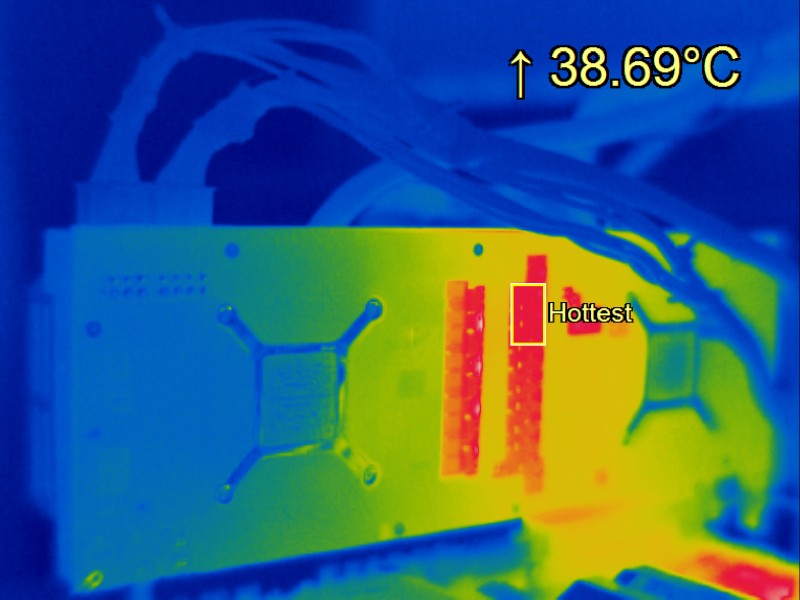 |
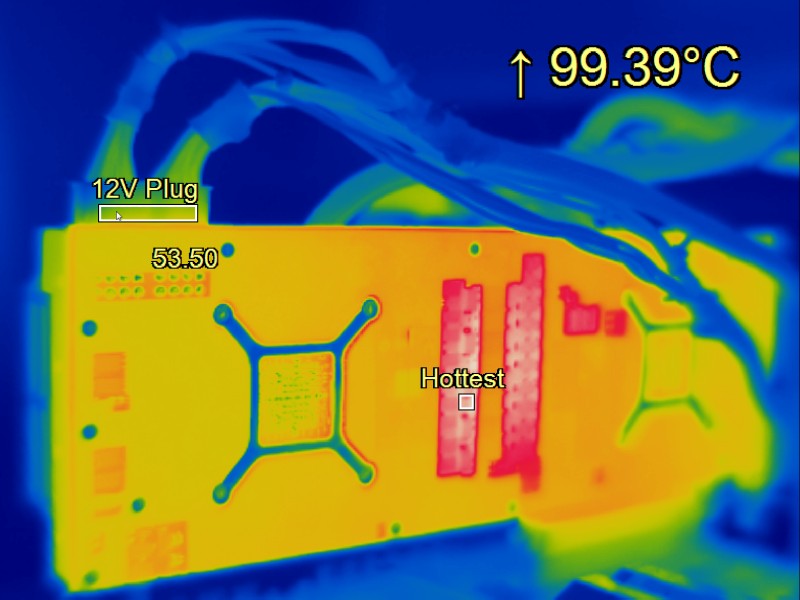 |
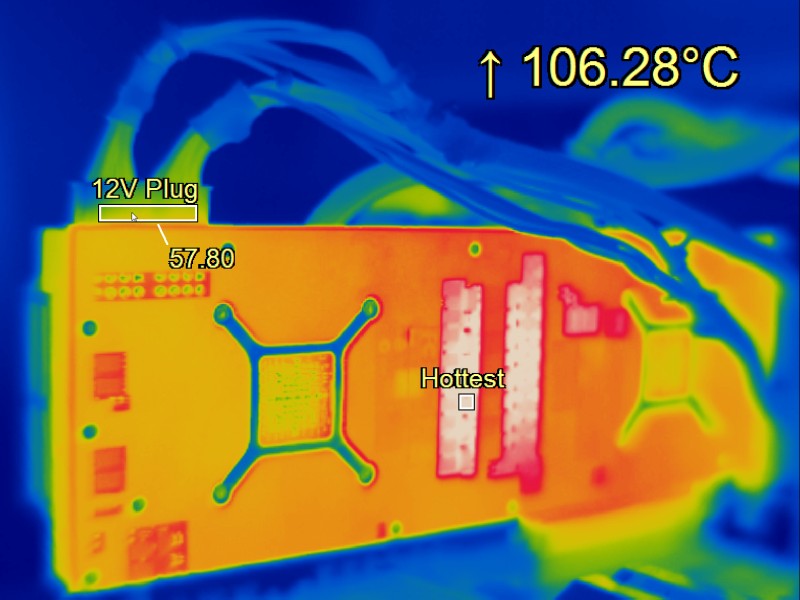 |
Eventually, the heat spreads through the soldered connecting pins into the PCI Express connector sockets (which later also became warm up to 59°C) and then only via the plug-in contacts into the cables.
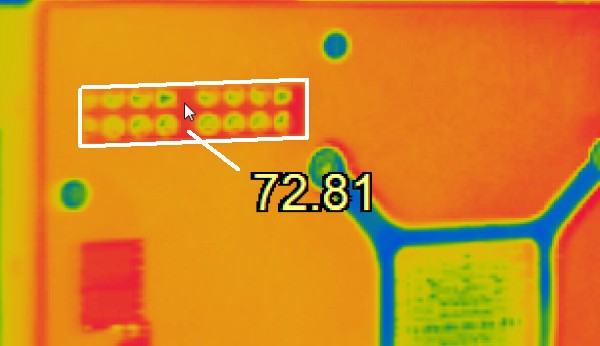
So we can rest assured, because the cables and connections of the power supply do not suffer from this card, as long as they meet the usual quality standards! But what about the power supply?
Supply bottlenecks? Not really if…
To make the whole thing even more exciting, we first test one and later even two such cards in the quad crossfire in sweltering heat (just under 30°C room temperature). First, we use a decent 500-watt power supply (be quiet! Straight Power E10), which is only 20 percent overload cleanly shuts down. If our readings for the R9 295X2 from the launch item average 430 watts in the gaming loop, then the maximum available 600 watts should also be available for the graphics card, a mid-range motherboard and a non-overclocked Core i7-4770K as well as eight GByte RAM and an SSD loosely suffice.
And they do, because the Chroma never shows more than 610 watts in the maximum, but usually significantly less – and so we even go to eat a pizza comfortably in between. The loop is running stable and we are wondering for the first time about the failures of the big cars in the launch items. But why should we just crackle? Once brave, we now even hang two R9 295X2 on a 1000-watt power supply that is no longer quite fresh (be quiet! Power Zone), which is only certified with 80+ bronze. Now the power consumption of both cards and that of the test system should be combined at approx. 1000 watts on the secondary side and the power supply should be able to handle this load loosely.
With the new one-hour gaming loop and almost 100 percent utilization, we measure a power consumption of up to 1100 watts on the chroma primary side. This means that our overall system is in any case well below 1000 watts, which first proves that our measurements of power consumption correspond exactly to reality. But why do much more generous systems switch off anyway? Let's also look at this stress test in the video. For information: The volume is composed of the roaring chromas and the two graphics cards; the power supply went smoothly in this acoustic inferno:
Power supply and graphics card should match. It is not the pure wattage of the total power that is decisive for success, but factors such as single or multi-rail and the available and really achievable currents, which can be delivered constantly even under very short, violent load spikes, without the voltage values buckling at short notice. The question answers the power supply at the end.
- 1 - Einführung und Projektvorhaben
- 2 - Grafikkarten und die Tricks mit der Leistungsaufnahme
- 3 - Leistungsaufnahme-Messung: Benötigte Technik
- 4 - Leistungsaufnahme-Messung: Praktische Umsetzung
- 5 - Radeon R9 295X als Netzteil-Killer? Myth busted!
- 6 - AWG was? Kabelsalat und Gegrilltes vom Chefkoch
- 7 - Schalten und Walten - Wir schauen ins Netzteil
- 8 - Bad caps, good caps? Die Mär vom japanischen Drachen.
- 9 - Zusammenfassung und Fazit















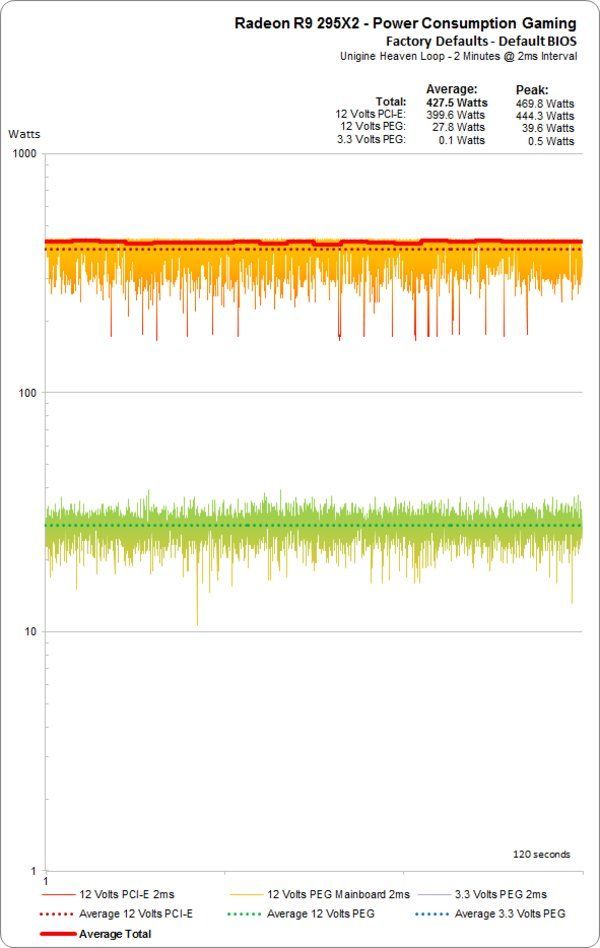
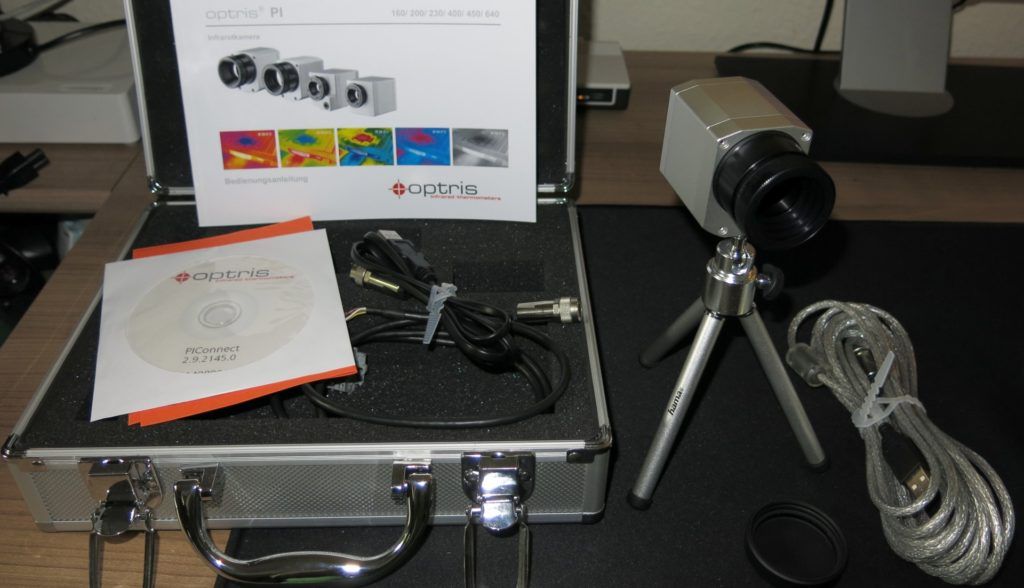
















Kommentieren